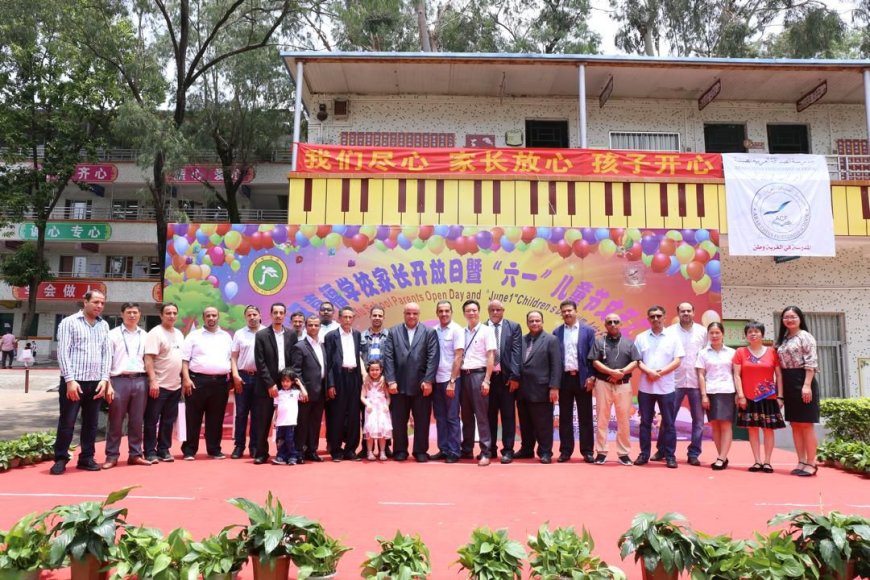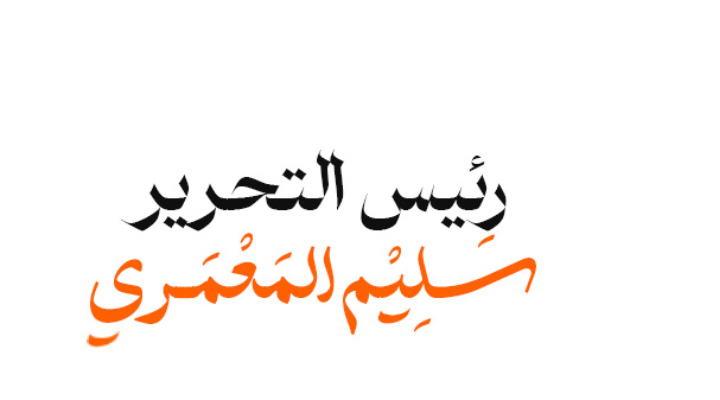المهندس صالح المحبشي عربي يمني يجسّد الدبلوماسية الثقافية..

منبر الاخبار / المنبر الثقافي ...
منبر الاخبار / المنبر الثقافي
تحت عنوان ( ذاكرة الحرير: حين نَسَجَت الصداقة العربية الصينية لوحة الحضارات )..كتب المهندس صالح المحبشي مجسدا بما كتب مايمكن اعتباره استحقاقا لاول عربي يجسد الدبلوماسية الثقافية ...
وكتب المهندس صالح المحبشي يقول :
في زوايا الذاكرة، حيث تعبق الذكريات برائحة العراقة، تعود بي الصفحات إلى سبع سنوات خلت، حين كان الجنوب الصيني، وتحديداً مدينة غوانزو، يحتضن بذرة حلمٍ عربيٍ وُلدت بين دفاتر العطاء: مدرسة الصداقة العربية الصينية...
كان لي يومها شرفُ تأسيس أول مدرسة عربية تكافلية في جمهورية الصين الشعبية، خطوة لم تكن مجرد مشروع تعليمي بقدر ما كانت جسراً من قلوب، حواراً بين ضفتي التاريخ، حيث يلتقي خطّ الحضارات في خيوط “طريق الحرير”، ذاك الطريق الذي لم يحمل قوافل التجارة فحسب، بل حمل روح التبادل الثقافي، والمعرفة العابرة للقارات...
ومع إشراقة ذاك الحلم، بزغ مهرجان ثقافي عالمي، كان بحق لوحة فسيفسائية رسمتها أيادٍ من أكثر من 15 جالية عربية، تآلفت مع الثقافة الصينية في مشهد بانورامي ساحر. لم يكن مهرجاناً عادياً، بل كان كمن يحيك نسيجاً من الأرواح، حيث يُحكى عن الموشحات الأندلسية إلى جوار الأغاني الشعبية الصينية، وتتماوج رقصات السيف اليمني مع عروض فنون الكونغ فو، وكأن الماضي يستعيد بريقه في مسرح مفتوح للعالم...
لم يكن الهدف عرض الأزياء التراثية أو المأكولات الشعبية وحسب، بل كان الجوهر أعمق: أن نروي للعالم قصة الإنسان حين يكون الجسرَ لا الجدار، حين يصغي للتاريخ لا ليحفظه فحسب، بل ليعيد كتابته بلغة التفاهم والاحترام المتبادل...
ولعل ما يضفي على هذه الذكرى رونقاً خاصاً أنها تتجدد اليوم، في الرابع عشر من مايو، وكأن للتاريخ موعداً معنا، يعيد التذكير بأن جسور التواصل لا تقاس بالسنوات، بل بالرسائل النبيلة التي تبقى حيّة في القلوب والعقول...
هنا في غوانزو، اجتمعت الحِكَم العربية من قبيل “اطلبوا العلم ولو في الصين”، لتُصبح واقعاً نابضاً. ولم يكن التلاقي بين ضفاف النيل والفرات وبين ضفاف نهر اللؤلؤ (تشو جيانغ) صدفة، بل امتداداً لوشائج التاريخ الذي جمعنا منذ قرون...
تلك اللحظات كانت تتجاوز حدود الفعالية الثقافية إلى كونها درساً عملياً في الدبلوماسية الشعبية، حيث الأطفال الصينيون يرددون أبيات الشعر العربي، وحيث العرب يتذوقون عبق الشاي الصيني في مراسمه التقليدية...
لقد كان “مهرجان طريق الحرير” تجسيداً حيّاً لمفهوم التكامل الحضاري، ذلك المفهوم الذي لا يذوب فيه أحد، بل يتماهى فيه الكل ليولد منه الجديد، كما قال ابن خلدون: “الاختلاط بالأمم سبب من أسباب الحضارة والتقدم”...
إنها لحظة فخر لا تمحى من الذاكرة، حين تصبح المبادرات الفردية بوصلة تجمع الشتات، وحين يتحول الحلم الشخصي إلى صرح يعبر عن طموحات أمة...
وما أجمل أن يكون ذلك كله تحت راية الصداقة الحقيقية، حيث نُعيد للعالم ذكريات طريق الحرير، لا كتاريخ منسي، بل كجسر مفتوح للمستقبل...
From the memory of silk: when the Arab-Chinese friendship woven the painting of civilizations
In the corners of memory, where memories are floated with the smell of Iraq, the pages date back to seven years ago, when southern China, specifically the city of Guangzhou, embraced the seed of an Arab dream born between the books of giving: the Arab-Chinese Friendship School.
On that day, I had the honor of establishing the first Arab Takaful school in the People's Republic of China, a step that was not just an educational project as much as it was a bridge of hearts, a dialogue between the two banks of history, where the line of civilizations meets in the threads of the “Silk Road”, that road that not only carried the caravans of trade, but also carried the spirit of cultural exchange and transcontinental knowledge.
With the dawn of that dream, an international cultural festival emerged, which was truly a mosaic painting painted by the hands of more than 15 Arab communities, which was in harmony with Chinese culture in a charming panoramic scene. It was not an ordinary festival, but like one who weaves a fabric of spirits, where the Andalusian scres are talked to the next to Chinese folk songs, and the Yemeni sword dances ripple with kung fu arts performances, as if the past is regaining its luster in an open to the world.
The goal was not only to show traditional costumes or popular cuisine, but the essence was deeper: to tell the world the story of man when the bridge is not the wall, when he listens to history not only to preserve it, but to rewrite it in the language of understanding and mutual respect.
Perhaps what gives this anniversary a special splendor is that it is renewed today, on the fourteenth of May, as if history has a date with us, reminding that the bridges of communication are not measured by years, but by noble messages that remain alive in hearts and minds.
Here in Guangzhou, Arab governance such as “seek knowledge even in China” came together, to become a vibrant reality. The convergence between the banks of the Nile and the Euphrates and the banks of the Pearl River (Zhu Jiang) was not a coincidence, but an extension of the history that brought us together centuries ago.
These moments went beyond the limits of cultural effectiveness to being a practical lesson in popular diplomacy, where Chinese children repeat the verses of Arabic poetry, and where Arabs taste the fragrance of Chinese tea in its traditional ceremonies.
The “Silk Road Festival” was a living embodiment of the concept of civilizational integration, that concept in which no one dissolves, but in which everyone is able to give birth to the new one, as Ibn Khaldun said: “Mixing with nations is one of the causes of civilization and progress.”
It is an indelible moment of pride from memory, when individual initiatives become a compass that brings together the diaspora, and when the personal dream turns into an edifice that expresses the aspirations of a nation.
And how beautiful it is that all this is under the banner of true friendship, where we bring back memories of the Silk Road to the world, not as a forgotten history, but as an open bridge to the future...





